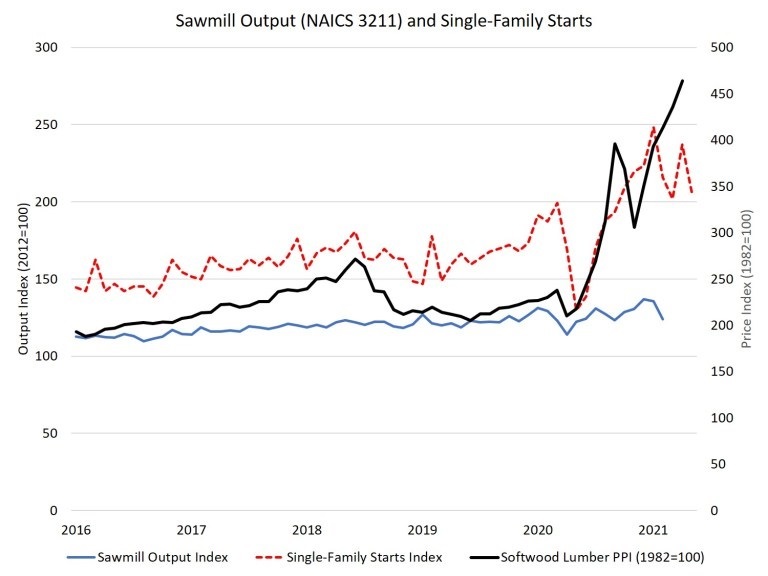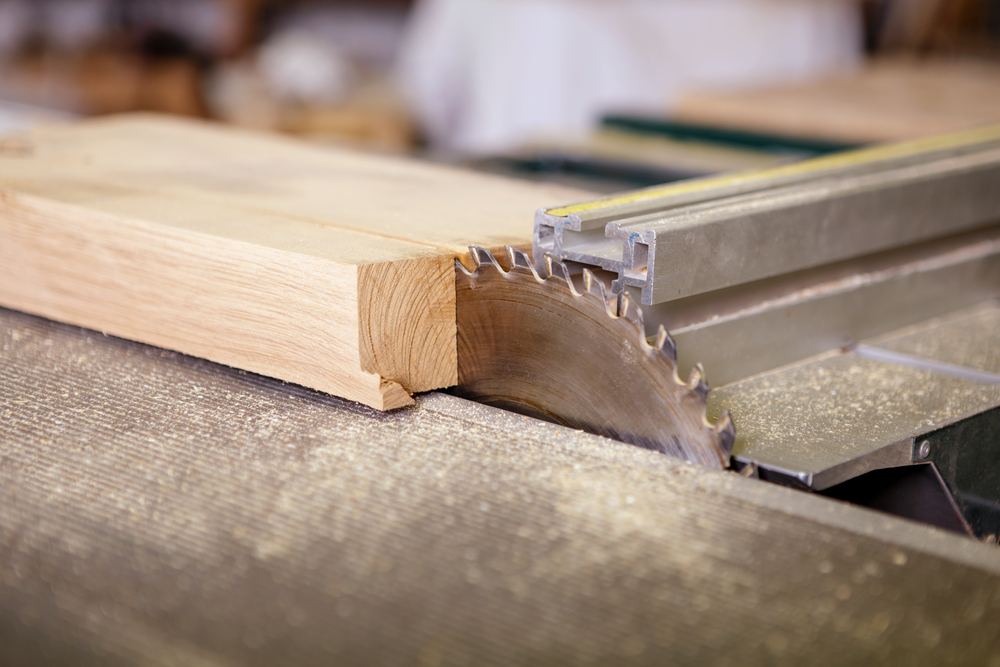The historic climb for lumber prices, combined with delays and higher costs for other building materials in U.S., is a significant limiting factor for home building in 2021, as The National Association of Home Builders of the United States (NAHB) reporetd.
Despite a historically low level of overall housing inventory and solid demand due to low mortgage interest rates and demographics, new construction has been unable to add additional needed supply to the market, resulting in unsustainable gains for home prices.
The following economic data track estimates concerning the sawmill industry (NAICS 3211). The data clearly indicate that domestic production has not kept pace with the gains for home construction during an extraordinary 2020.
A cited reason for the lack of lumber production in the U.S. has been challenges with labor, a limiting factor for the overall economy in both the manufacturing and construction sectors. Bureau of Labor Statistics data indicate that, indeed, sawmill industry employment is indeed lower than a year ago. As of March 2021, the most recent data available, sawmill employment was 88,900. This is a 0.8% decline from March 2020, or a net loss of 700 jobs. In contrast, residential construction employment was up 2.8% or 82,000 net jobs over the same period.
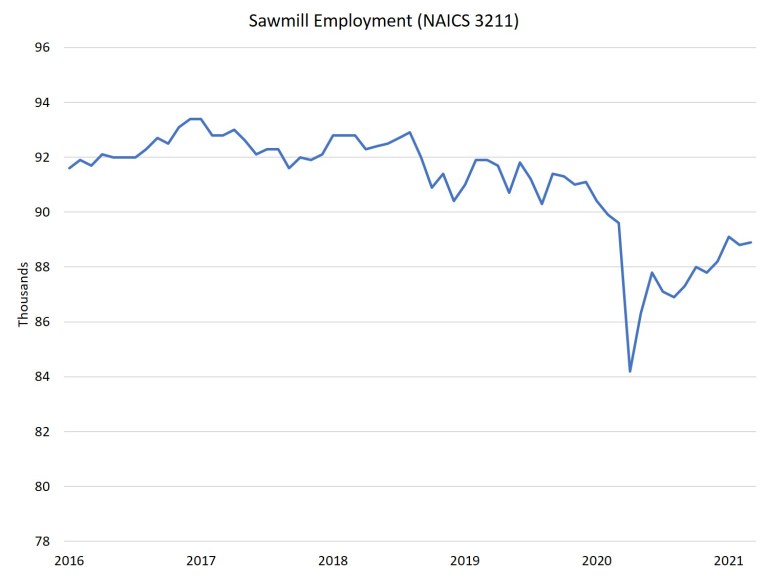
Despite the decline in workers, sawmill output did increase over the course of 2020, albeit along a choppy trend. Data from the Bureau of Economic Analysis demonstrates that the seasonally adjusted rate of sawmill output in February 2021 (the most recent available) was 4% lower than that recorded in February 2020.
However, total 2020 sawmill output was up 3.3% compared to 2019 output. This was due to an upswing in production in November and December, which followed a decline in the third quarter. An additional decline February 2021, as seen at the end of the graph, was due to weather issues (Winter Storm Uri) in the South.
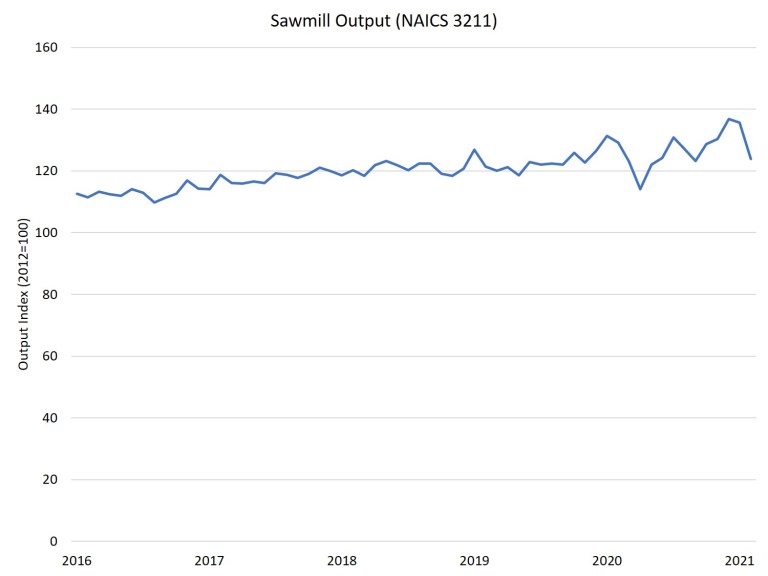
The 2020 increase in output was insufficient to keep up with the demand from residential construction. The following graph presents single-family starts and sawmill output indexed so that 2012 levels equal 100. The growing gap between the two measures, particularly in 2020, is the reason for the dramatic increase in lumber prices. It is important to keep in mind that single-family starts were up 12% in 2020.
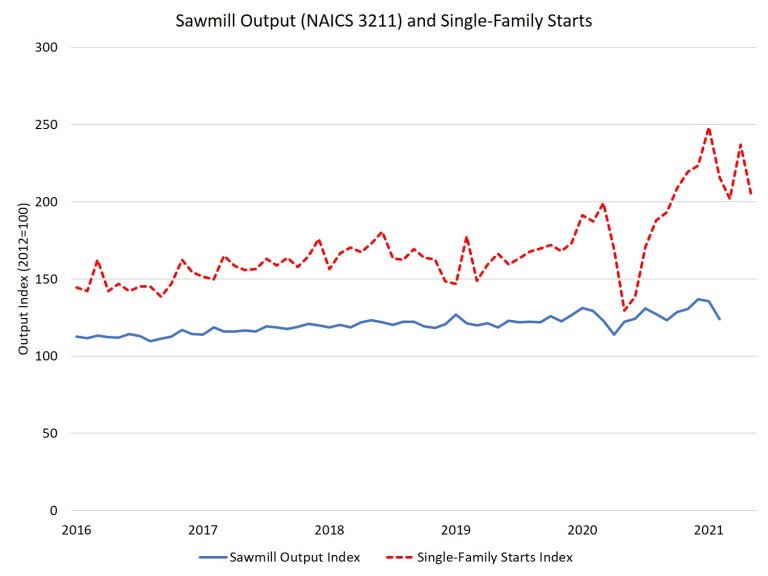
This impact on price can be seen by adding an indexed measure of the BLS Producer Price Index for softwood lumber. These data indicate that given the inability of the domestic industry to rapidly increase lumber production, the result is an unprecedented increase in lumber costs. This gap, and the material cost impact, can only be closed via a significant increase in domestic production, more U.S. imports of lumber, or a significant substitution to other building materials.
